
ESPAÑOL
Promotor: Emperadores de la Dinastía Flavia
Distribución: Planta Elíptica de 189 x 156 metros
Capacidad: 50.000 espectadores
Altura: 48 metros
Una de las construcciones más famosas del mundo entero por excelencia es el Coliseo de Roma. Antiguamente se le conocía con el nombre de Anfiteatro Flavio y se encuentra localizado en el corazón de la ciudad de Roma. La construcción tiene una gran influencia religiosa y fue construida entre los años 70 a.C. al 80 d.C. por los Emperadores de la Dinastía Flavia. El majestuoso edificio se erigió espléndido alrededor de una planta elíptica de 189 metros de largo por 156 de ancho y 48 metros de altura. El interior del edificio, abierto al cielo de Roma, se distribuyó con 80 filas de gradas con una capacidad para 50.000 espectadores de la época desde la que se presenciaban todo tipo de acontecimientos de carácter cultural y social. La lucha de gladiadores, la recreación de batallas famosas a través del teatro, los famosos Juegos, etc, además de otros muchos espectáculos públicos, se darían cita aquí durante nada menos que 500 años. El famoso monumento figura en la lista de las siete maravillas del mundo antiguo y ha sido proclamado desde el año 1980 por la Unesco como Patrimonio de la Humanidad. No obstante, el famoso Coliseo de Roma es, junto con la Torre Eiffel de París y la Estatua de la Libertad de Nueva York, uno de los monumentos más visitados del mundo en la actualidad. Por su tamaño y su forma ovalada, el Coliseo de Roma ha inspirado también a otros arquitectos a lo largo de toda la historia para diseñar estadios deportivos más modernos de similares dimensiones.

La majestuosa fachada, en su mayoría de piedra de travertino y de casi 50 metros del altura en su punto más alto, esta formada por cuatro cuerpos de diferentes órdenes clásicos; columnas de orden dórico para el primer nivel, orden jónico para el segundo y corintio para el tercero. Estas columnas que embellecen la fachada son puramente decorativas y se muestran en todo su esplendor en relieve más saliente que el resto de la monumental construcción. El dibujo de los tres primeros niveles lo conforman 80 arcos de medio punto con sus correspondientes dovelas que se apoyan en enormes pilares con sección rectangular y que son el sustento de gran parte del edificio; el cuarto nivel, sin embargo, está formado por pilastras adosadas mediante una pared ciega alrededor de todo el recinto, exceptuando los ventanales de forma rectangular que a modo de mirador ofrecen vistas hacia el exterior y coronan el edificio en su parte superior. La ubicación de las gradas destinadas a la realeza se situaron más cerca de la arena para presenciar más los detalles de los espectáculos, mientras que el resto de clases sociales, de mayor a menor rango, iban ascendiendo colocándose en las gradas superiores. El suelo del recinto estaba formado por un forjado de madera recubierto de arena que lo ocultaba; numerosas trampillas se abrían para dejar salir a las fieras. Bajo esta cubierta se escondía un auténtico laberinto de muros que daban cabida a gladidores, fieras, y en general a quien estaba implicado en el concurso de los espectáculos de carácter público que se celebraban en el gran anfiteatro.
El texto de este artículo se incluye en mi libro titulado "CONSTRUCCIONES FAMOSAS" / The text of this item is included in my book title "FAMOUS CONSTRUCTIONS" Español - English
by José Miguel Hernández Hernández
Publisher, Writer and Architectural Photographer
www.jmhdezhdez.com
Video promotional
ENGLISH
Promoter: Emperors of the Flavian dynasty
Distribution: Plant Elliptical 189 x 156 meters
Capacity: 50,000 spectators
Height: 48 meters
One of the most famous buildings worldwide for excellence is the Colosseum in Rome. Formerly known by the name of Anfiteatro Flavio and is located in the heart of the city of Rome. The building has a large religious influence and was built between 70 BC 80 d.C. by the emperors of the Flavian dynasty. The majestic building was built around a magnificent elliptical than 189 meters long by 156 wide and 48 meters high. The interior of the building open to the sky of Rome, was distributed with 80 rows of bleachers with a capacity for 50,000 spectators at the time from which witnessed all kinds of events of cultural and social nature. The fight of gladiators, the recreation of famous battles throughout the theater, the famous Games, etc, plus many other public spectacles, they would gather here for no less than 500 years. The famous monument on the list of the seven wonders of the ancient world and has been proclaimed since 1980 by UNESCO as World Heritage. However, the famous Roman Colosseum, along with the Eiffel Tower and the Statue of Liberty in New York, one of the most visited monuments in the world today. For its size and shaped, the Colosseum has also inspired other architects throughout history to design more modern stadiums of similar size.

The majestic facade, mostly travertine stone and nearly 50 meters high at its highest point, is formed by four bodies of different classical orders, Doric columns to the first level, Ionic for the second and Corinthian for the third. These columns that adorn the front are purely decorative and are displayed in all its splendor in relief more outgoing than the rest of the monumental construction. The drawing of the first three levels is made up of 80 arches with their corresponding segments which are supported by huge pillars with rectangular section and which are the mainstay of much of the building, the fourth level, however, is formed by pilasters by a blind wall around the compound, except rectangular windows that overlook viewing mode outwards and crown the building at the top. The location of the stands for royalty were located closer to the arena to witness more details of the shows, while the other social classes, from highest to lowest rank, were climbing higher placing in the stands. The floor of the enclosure was formed by a slab of wood covered with sand that hid it, numerous hatches were opened to let out to the beasts. Under this cover is hiding an incredible maze of walls that were accommodated gladidores, beasts, and in general who was involved in the competition for the public performances that were held in the great amphitheater.

"Images Colosseum, Rome, Italy"
Image 1 Copyright © Diliff
Image 3 Copyright © Jean-Christophe BENOIST
Image 2-4 Public Domain
"Text" and "Video" Copyright © José Miguel Hernández Hernández
Editor, Escritor y Fotógrafo de Arquitectura /
Publisher, Writer and Architectural Photographer
Todos los derechos reservados / All rights reserved
www.jmhdezhdez.com
Related articles / Artículos relacionados
El David
Piazza della Signoria, Fiorenze, Italy
Michelangelo Buonarroti
Ponte Vecchio
Florencia, Tuscany, Italy
Taddeo Gaddi and Giorgio Vasari
Pisa Tower
Pisa, Toscana, Italy
Bonanno Pisano and others
Chichén Itzá Pyramid
Yucatán, Mexico
Maya Dinasty
Acropolis of Athens
Athens, Greece
Ictino, Calícrates y Fidias
MUY IMPORTANTE!!! VERY IMPORTANT!!!
Deja tu comentario sobre este reportaje al pie de este post donde dice "Publicar un comentario en la entrada"; me será de gran valor para seguir mejorando este sitio web y te contestaré con la mayor brevedad posible... Muchas gracias!
No obstante, si te ha resultado interesante este reportaje y también el Blog en general, por favor, no dudes en hacerte Fan de la página de Fans del Blog de José Miguel Hernández Hernández en Facebook aquí
Nota importante: Una vez que hayas entrado en la página de Fans del Blog en Facebook, con sólo hacer click en el botón de "Me gusta", a partir de ese momento estarás al tanto de todos los nuevos reportajes interesantes relacionados con la Arquitectura y la Ingeniería que aquí se vayan publicando para no perder ningún detalle...
También puedes suscribirte por e-mail (te llegaría un e-mail con el enlace de cada artículo en el mismo momento en que sea publicado), o bien también puedes seguir el Blog a través de Twitter aquí
Nos vemos en el Blog!
Leave a comment on this story at the bottom of this post where it says "Post a comment in the entry", I will prove invaluable to further improve this website and I will answer as soon as possible .. . Thank you very much!
However, if you this story was interesting and the blog in general, please do not hesitate to make Fan Fans of the Blog page José Miguel Hernández Hernández on Facebook here
Very important: Once you enter the page Blog fan of Facebook, simply click on the button Like "From that moment you are aware of all new interesting stories related to the Architecture and Engineering are published here to avoid losing any detail ...
Can also subscribe by e-mail (I would e-mail with a link to each item in the same time it is published), or you can follow through Blog Twitter here
See you at the Blog!
HOME GEOGRAPHY ARCHITECTURE ENGINEERING SKYSCRAPERS
BRIDGES BUILDINGS TOWERS PUBLICATIONS ABOUT ME CONTACT
Copyright © José Miguel Hernández Hernández
Editor, Escritor y Fotógrafo de Arquitectura /
Publisher, Writer and Architectural Photographer
http://www.jmhdezhdez.com/
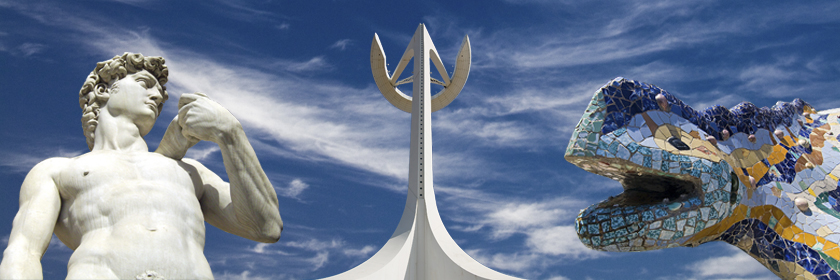


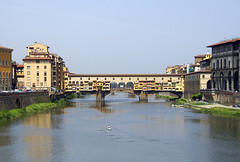

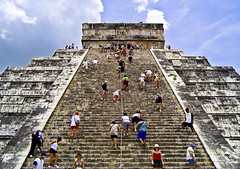






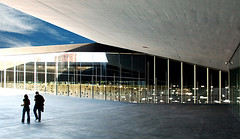



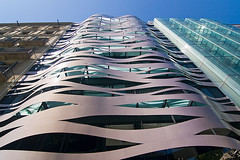



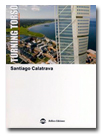

No hay comentarios:
Publicar un comentario